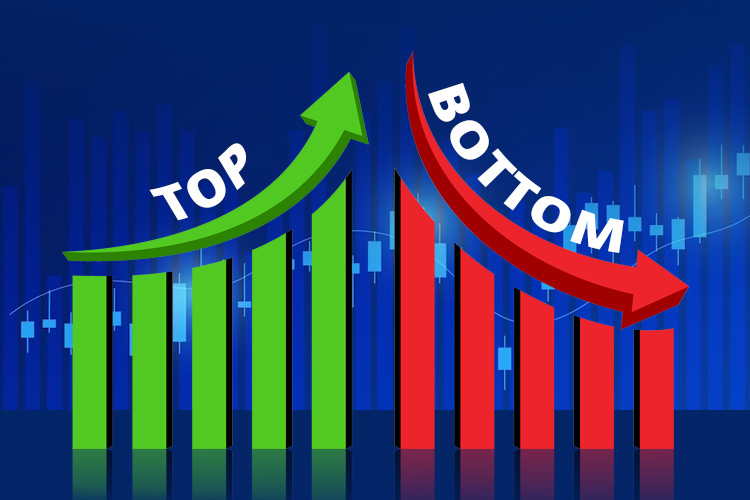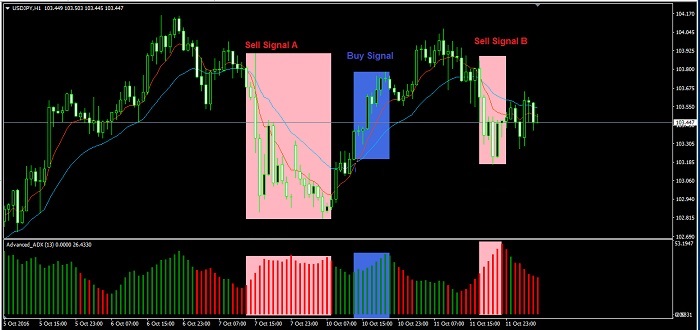To avoid making incorrect trades, it's important to identify the top and bottom when trading accurately. How can you determine this correctly?
Many traders face losses as they push themselves to open short positions at the "top" and long positions at the "bottom." Although it may not be the primary cause of traders' losses, wrongly identifying the top and bottom of the price can significantly affect them. To prevent this, consider the three factors mentioned below before using the top and bottom.

How to Identify Top and Bottom Levels
In trading, identifying top and bottom levels involves finding support and resistance points. The top-level occurs when the price reaches the highest point, as a chart peak shows. On the other hand, the bottom level occurs when the price of a pair reaches its lowest point, indicated by a chart at the bottom.
The top level is similar to a resistance point, while the bottom level represents a support point. If the price breaks through the top level, that point could become the new bottom. The more frequently the price tests the top and bottom levels, the stronger the top and bottom areas become.
You can use random horizontal lines to identify the forex's top and bottom levels. First, turn off the candlestick or bar on the trading chart. Then, draw horizontal lines on the screen. Turn your candlestick chart back on, and you will see several things, such as:
- When the price rebounds off the random line.
- When the price rebounds multiple times.
- The switching of roles between the top and bottom levels.
What should you do after identifying the top and bottom levels in trading?
Identifying the top and bottom forex levels is particularly useful for traders who use counter-trend strategies, which involve trading in the opposite direction of the trend. Unlike following the trend, which involves following the trend shown on the chart, counter-trend traders place positions opposite to the trend when the price reaches the top or bottom point to earn profits.
Chart patterns that suggest a reversal of trend appear in various forms. Double top, head and shoulders, and rising wedge patterns indicate a top position, while the double bottom, inverse head and shoulders, and falling wedge patterns indicate a bottom position.
Considerations When Determining Top and Bottom Price
Determining forex top and bottom levels is like catching a knife thrown high in the air. You will not know whether you will catch the handle or the blade. Therefore, consider the following three things before determining the top and bottom of forex trading.
Important Factors in Top and Bottom Strategy
As mentioned earlier, determining top and bottom prices is like throwing a knife up in the air and is highly subjective to the trader. This means the technical levels you see may differ from those other traders see.
Furthermore, trend-driving factors, such as market sentiment, fundamentals, and so on, play a significant role. Therefore, if there is an economic or political data release, top and bottom levels may no longer be useful.
In counter-trend strategies, making errors on long-term retracement time frames is easier than on short-term ones.
It is more perilous when a trader has a mindset that they can outsmart the market by accurately guessing its movement. It should be noted that nobody can predict the forex market. If a trader claims to know the exact price movement, they undoubtedly possess a high level of self-ego.
This attitude prompts traders to disregard their trading plans and place stop losses that are tighter than usual. Consequently, risk management becomes increasingly chaotic. Instead of earning profits, traders may face significant losses or even drawdowns.
Is it Good for Beginners?
While there are instances when fundamental and technical analyses may suggest a reversal, there is no definite guarantee that the market will shift direction. Failing to provide sufficient space to anticipate a potential reversal may put your account at risk in the long run.
This is why professional traders exercise caution when determining tops and bottoms. Counter-trend trading requires extensive trading experience and expertise. Some professional traders recommend that 90 percent of trading align with the trend to enable trading against it.
While identifying top and bottom prices is a positive step, there are several factors you should consider before utilizing them for forex trading. Be sure to apply proper risk management techniques like professionals and remain flexible, allowing some leeway if the market differs slightly from your projections.
While the counter-trend strategy might not suit beginners, it doesn't mean traders can't start learning about it. For example, finding facts about trend trading can be a good way to start.

 Dedicated FREE FOREX VPS
Dedicated FREE FOREX VPS Free FOREX Virtual Private Server
Free FOREX Virtual Private Server MT4 Demo Contest, Get $500
MT4 Demo Contest, Get $500 Sign Up for an Account, Claim 60% Deposit Bonus
Sign Up for an Account, Claim 60% Deposit Bonus Free MT4/MT5 VPS 2024
Free MT4/MT5 VPS 2024 Send E-mail and Get Free Merchandise
Send E-mail and Get Free Merchandise $1K Refer a Friend Bonus for Pepperstone Pro clients
$1K Refer a Friend Bonus for Pepperstone Pro clients Maximize Your Earnings with 100% Deposit bonus
Maximize Your Earnings with 100% Deposit bonus Trade to Win, $5,000 Monthly Demo Contest
Trade to Win, $5,000 Monthly Demo Contest Claim 30% + 15% Deposit Bonus from LiteFinance
Claim 30% + 15% Deposit Bonus from LiteFinance











